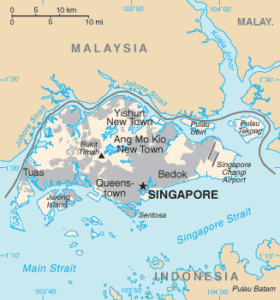Will the Golden Age For Corporate Shareholders Ever End?

John P. Ruehl – Source: Independent Media Institute
05-05-2024 ~ Shareholders have assumed enormous influence over U.S. corporations over the last few decades. Despite their firm hold, shifts are underway that could alter the domestic corporate landscape.
On April 3, 2024, Disney CEO Bob Iger officially fended off the attempt by institutional investor Nelson Peltz and his hedge fund Trian Partners to secure two board seats. During the affair, Disney faced pressure from proxy advisory firm Institutional Shareholder Services to support Peltz’s initiative. While Iger prevailed, the costliest board fight in history underscores the significant influence of shareholders in shaping the fates of corporations.
Historically, U.S. corporate power was concentrated among executives, though with varying degrees of influence held by workers and other stakeholders. However, over the last century, U.S. corporations increasingly oriented themselves around their stock price and the imperative to maximize shareholder value. This mindset has now firmly entrenched itself within U.S. corporate culture and continues to shape their decisions and priorities.
Until the early 20th century, shareholders wielded minimal influence over U.S. corporations, with notable changes instigated by industries such as railroad conglomerates. To sidestep antitrust accusations and manipulate competition, for example, railroad companies created “communities of interest” by buying shares in one another, frequently installing their financiers and bankers on targeted companies’ boards. However, increased antitrust enforcement from the Supreme Court discouraged these practices by 1912. Read more
Seeing Red: Our Ancient Relationship With Ocher And The Color of Cognition
 05-03-2024 ~ Extensive ocher use reflects the culture and cognitive abilities of early humans, who inherited an affinity for red from primate ancestors.
05-03-2024 ~ Extensive ocher use reflects the culture and cognitive abilities of early humans, who inherited an affinity for red from primate ancestors.
Twenty-three million years ago, our distant ancestors gained trichromatic color vision through means of a random genetic mutation. Trichromatic color vision and trichromacy refer to the ability to perceive color through three receptors in the eye, known as cones, which are sensitive to different wavelengths of visible light. It has been assumed that primates ancestral to humans had two cones at the start of their lineage; the duplication and modification of genes coding for one of the two created another distinct, separate cone. Gaining a third cone allowed for the perception of red and other colors with long wavelengths in addition to the two preexisting receptors for blues and greens with shorter wavelengths—red was entirely unknown to primate species before this mutation, and the ability to see red remains rare among other mammals. Exceptions to mammalian dichromacy, the state of having two cones, are uncommon. Some primates lost one of their cone receptors, becoming monochromats. Having a single cone, monochromats like the nocturnal owl monkeys (genus Aotus) perceive light intensity in shades of gray without the ability to differentiate color values. Others, including the ancestors of modern apes, monkeys, and humans, happened to gain a third cone.
Michael H. Rowe, professor emeritus of neuroscience at Ohio University, confirms that random processes were involved in the evolution of primate trichromacy in his study of the underlying neurophysiological mechanisms, and outlines the two dominant theories for the maintenance of a third cone among primates. One longstanding theory is that of enhanced fruit detection among diurnal primates, who are most active during the daytime. According to this theory, improved discernment of red fruits against green foliage led to a direct increase in efficiency when foraging for nutritious food. The second theory, however, suggests it was the consumption of leaves rather than fruit that more strongly influenced routine trichromacy. This alternate “young leaf” hypothesis emphasizes the importance of enhanced color vision when selecting nutritious leaves over their less beneficial counterparts, especially at times when fruit is scarce and surviving off of leaf consumption becomes critical. Rowe’s findings and the newer “young leaf” theory also align with the later evolution of trichromatic vision in the howler monkey, a New World primate.
New World primates like the howler monkey and Old World primates, which include humans and apes, are two major groups within the order Primates that differ in anatomical features and geographic distribution. Since their last common ancestor did not have trichromatic vision, the trait evolved in both Old and certain New World species through convergent evolution. This occurs when similar traits evolve among distantly related species, usually due to similar environmental pressures and advantages to the trait.
Further down the evolutionary timeline, rocks and minerals became the cornerstones of technological advancement among hominins. Within the range of widely accessible raw materials, one pigment stands out with its broad spectrum of color: ocher. Ocher varies in shade depending on its chemical and structural composition, appearing from light yellows and rusty browns to deep red-purple hues. Red ocher, for example, gains its color from an abundance of an iron oxide called hematite. Read more
PVV Blog 7 ~ Remembrance Day 2024
 05-03-2024 ~The Netherlands commemorates the victims of the Second World War annually on May 4th. This remembrance takes place through a ceremony held at the central square ‘de Dam’ in Amsterdam.
05-03-2024 ~The Netherlands commemorates the victims of the Second World War annually on May 4th. This remembrance takes place through a ceremony held at the central square ‘de Dam’ in Amsterdam.
During the yearly Remembrance Day event, wreaths are laid at the monument by the chairpersons of the Senate and House of Representatives. This year, Martin Bosma, a member of the Party for Freedom, will lay the wreath on behalf of the House of Representatives. In 2023, Bosma was democratically elected as the chairman of the House of Representatives, representing the ideological stance of the Party for Freedom. Throughout this series, I heavily draw upon his book ‘De schijn-élite van de valse munters. Drees, extreem rechts, de sixties, nuttige idioten, Groep Wilders en ik’ published in 2010. Below, I provide an analysis of several quotes from Bosma’s book, followed by commentary on these quotes.
Quotes about Christianity
‘There are few things the Dutch can be happier with than the Christian background of their country. Almost all of our crucial achievements have a relationship with Christianity. Democracy, separation of church and state, tolerance, but also values such as diligence and efficiency’ (p. 94).
‘Monoculturalism, supplemented with Christian-Western values such as diligence, discipline, honesty and efficiency, created an unparalleled high point in human history’ (p. 188). Read more
Singapore: Lawrence Wong To Lead Amid Economic And Political Challenges

Geography of Singapore – en.wikipedia.org
05-03-2024 ~ Deputy Prime Minister Lawrence Wong is set to become Singapore’s next leader on May 15, succeeding Lee Hsien Loong. His leadership will be closely watched as he takes the helm.
Singapore has announced that Deputy Prime Minister Lawrence Wong will take over as the country’s next leader on May 15. Wong, 51, has garnered unanimous support from lawmakers within the People’s Action Party (PAP). He will succeed Lee Hsien Loong, who has held the top job for 20 years.
Wong, who earned praise for his management of the island’s pandemic response, has been regarded as Lee’s successor since April 2022. During this time, the ruling party selected him to lead the “4G” or fourth generation of leaders in Singapore’s political parlance—politicians the party aimed to have govern the country in the future.
Before that, Heng Swee Keat, a former central bank chief and education minister and choice for the post of Prime Minister, suddenly stepped aside in 2021, throwing the party’s succession plans into disarray.
The term “generation” suggests a significant transition rather than a complete overhaul of cabinets, as some ministers served under more than one prime minister. The first prime minister, Lee Kuan Yew, led the first generation of leadership from 1965 until 1990. He was succeeded by Goh Chok Tong, who held the premiership for the following 14 years until 2004 when Lee Hsien Loong assumed leadership. Read more
May Day May Have Been Obliterated From US History, But It’s Legacy Continues
 05-01-2024 ~ Progressive economic ideas have been on the whole an anathema to the U.S. political establishment and violence against labor militancy has always been the norm for almost all of the country’s political history. Nonetheless, the U.S. labor movement has not yet been defeated.
05-01-2024 ~ Progressive economic ideas have been on the whole an anathema to the U.S. political establishment and violence against labor militancy has always been the norm for almost all of the country’s political history. Nonetheless, the U.S. labor movement has not yet been defeated.
May 1st is International Workers’ Day and was established as such in celebration of the struggle for the introduction of the eight-hour workday and in memory of Chicago’s Haymarket Affair, which took place in 1886. May 1st is celebrated in over 160 countries with large-scale marches and protests as workers across the globe continue to fight for better working conditions, fair wages, and other labor rights. International Workers’ Day, however, is not celebrated in the U.S. and has in fact been practically erased from historical memory. But this shouldn’t be surprising since U.S. capitalism operates on the basis of a brutal economy where maximization of profit takes priority over everything else, including the environment and even human lives.
Indeed, the U.S. has a notorious record when it comes to worker rights. The country has the most violent and bloody history of labor relations in the advanced industrialized world, according to labor historians. Subsequently, unionization has always faced an uphill battle as corporations are allowed to engage in widespread union-busting practices through manipulation or violation of federal labor law. The recent activities of Amazon and Starbucks speak volumes of the anti-union mentality that pervades most U.S. corporations. Accordingly, unionization in the U.S. has been on decline for decades even though the majority of Americans see this development as a bad thing. Read more
Under Modi, The Northeast Is More United With India, But More Divided Within

Makepeace Sitlhou – Photo: LinkedIn
04-30-2024 ~ India’s ruling BJP claims to have overcome the “tyranny of distance” that has plagued Northeast India, but its politics have created greater division, as the Manipur crisis shows.
In March, India’s prime minister, Narendra Modi, said at an election rally in Arunachal Pradesh that previous governments had not cared for states that sent only two representatives to the country’s Parliament, as Arunachal and several others in the Indian Northeast do. Modi failed to see the irony of his claim given that he has not visited Manipur, which has only two representatives in parliament, since the outbreak of an armed ethnic conflict that has raged on for nearly a year. The toll from the violence stands at more than 200 lives lost, and many thousands displaced.
In India’s 2024 national election, widely seen as being decisive for the country’s democracy, the eight states in the Northeast—Assam, Sikkim, Arunachal Pradesh, Manipur, Mizoram, Nagaland, Tripura, and Meghalaya—will decide whether they want to be part of “Modi ka parivar,” or Modi’s “family”—a phrase that Modi’s Bharatiya Janata Party (BJP) has rolled out on social media as an election gambit. The BJP-led central government in Delhi has repeatedly claimed to have bridged the “tyranny of distance” between the Northeast and the rest of India, something that the region has undoubtedly long suffered from. Unfortunately, the Modi government’s handling of the Manipur crisis shows otherwise—and none of the BJP’s numerous political partners in the Northeast region, who often profess themselves to be “sons of the soil,” have challenged the government’s claim. Read more


